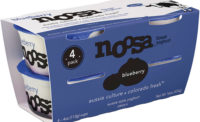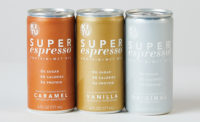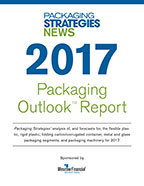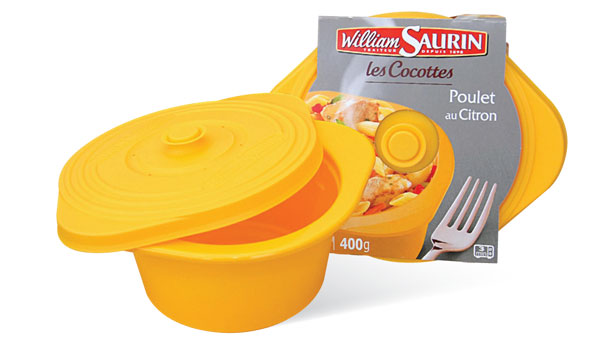Market Trends: Microwave Packaging
Less is more with microwave packaging
Consumers want less waste, less cook time and right-size, on the go packs.



Heat-N-Go packs serve up personal pouches of breakfast food that work just as the name suggests - consumers can heat them and go.





In 1945, a self-taught radar tube specialist, Percy Spencer, began working on a new vacuum tube called a magnetron when he accidentally discovered microwave cooking. While standing near the machine, Spencer noticed a chocolate bar in his pocket had begun to melt. Others had noticed this phenomenon before, but Spencer realized the potential. He sent for a package of popcorn. When he held it up to the machine, the kernels popped in minutes. He filed for a patent, and the Raytheon Corporation, the company where Spencer worked, created the first microwave in 1947. It was almost six feet tall, weighed around 750lbs and cost $5,000 (which is estimated at over $50,000 in today’s dollars).
Even though microwaves are still popping popcorn, these quick-cooking ovens have come a long way. They are smaller and more affordable, for starters. And they have become standard equipment in many homes and offices. Additionally, microwave ovens are finding new homes around the world every year. According to a report on the global microwave packaging market from Global Industry Analysts, Inc. (GIA), Asia-Pacific has emerged as a prime market for microwave packaging thanks to growing disposable incomes and need for convenience foods.
The same GIA study notes that microwave packaging slowed during 2008 and 2009 because of economic hardship, but began to grow again in 2010 as consumers’ demand for convenience foods rose due to busier lifestyles and dual income families. The study also attributes this and future growth to the innovative packaging technology that allows for a broader variety of foods to cook quickly and without compromised quality.
Convenience packaging is in demand, but it also creates a lot of waste. This isn’t a sustainable solution. Today’s consumers are conscious of their impact on the environment. They want to gobble up on-the-go goods without the side of guilt. To create a sustainable solution with a high cooking quality, Graphic Packaging International (graphicpkg.com) teamed up with ConAgra Foods to launch a frozen food tray that incorporations two innovations – DesignerWare® and MicroRite®. These two technologies work together to produce sustainable packaging with uncompromised microwave cooking performance.
DesignerWare is a paperboard/plastic hybrid. The paperboard body of the tray replaces up to 55% of the non-renewable plastic with renewable paperboard. The tray can be printed with up to six color offset graphics, eliminating the need for a secondary carton in many applications. This further reduces the amount of packaging used. The tray gains stiffness and impact resistance from the injection molded frame. This frame also provides the possibility for a high-barrier package for chilled and non-food applications.
MicroRite technology offers shielding and even-heating benefits to frozen meals. With this innovation, Graphic Packaging and ConAgra Foods are able to manage the available microwave energy and, thereby, reduce cook time and prevent dehydration, over cooked edges and cool centers.
The combination of DesignerWare and MicroRite in this single package creates a unique and innovative package that offers the convenience of microwave packaging with added sustainability and cooking quality.
“We are continually innovating in the microwave area in response to consumer and customer insights,” says Jeff Voyzey, business development manager for Graphic Packaging. “We are proud of the unsurpassed cooking performance of MicroRite and the reduction of non-renewable petroleum based plastics provided by our DesignerWare trays.”
Another microwave packaging innovation is the recently launched Pillsbury Heat-N-Go breakfasts, which are available in three varieties. These breakfasts come in single serve pouches that consist of eight pancakes or four waffles per pouch. The portable breakfasts, which can be found in the frozen breakfast section of the grocery store, cook right in the pouch, which can then be taken on the go. The pouches of pancakes cook in 45 seconds, and the waffle pouches cook in only 30 seconds, making the Heat-N-Go breakfasts a suitable option for time-crunched moms in need of a convenient breakfast option. The pouches are sold individually for $0.99 SRP and displayed on the shelf in shoppable cases. Pillsbury plans to launch more flavors in 2014.
As microwave packaging moves toward the new and innovative, consumers crave traditional fare and home-cooked classics. To capture the nostalgic warmth of casseroles, RPC Barrier Containers (rpc-group.com) has debuted a custom-designed tub and lid that resemble a traditional casserole pot for a range of ready meals produced by French foodservice specialist Soulié Restauration, part of the William Saurin Group. The long shelf life ambient packaging solution comes in red or yellow to note different products. The bright colors and innovative design help to create on-shelf impact and brand differentiation in a highly competitive market sector.
The 600ml oval tubs are thermoformed in multilayer polypropylene by RPC Bebo Plastik, with the matching lids injection molded in PP by RPC Bramlage. The barrier pack provides a shelf life of up to 18 months for the ready-to-heat typical French recipes.
The ready meals are retorted in the tub after filling. The technical skills and close cooperation between the two RPC sites help to ensure that the lid remains closely fitting after the retort process.
As the microwave packaging market grows, packagers meeting consumer demands for less packaging waste, better cooking in less time, single-serve portions, grab-and-go packaging and unique design will best capitalize on the market.
Looking for a reprint of this article?
From high-res PDFs to custom plaques, order your copy today!












